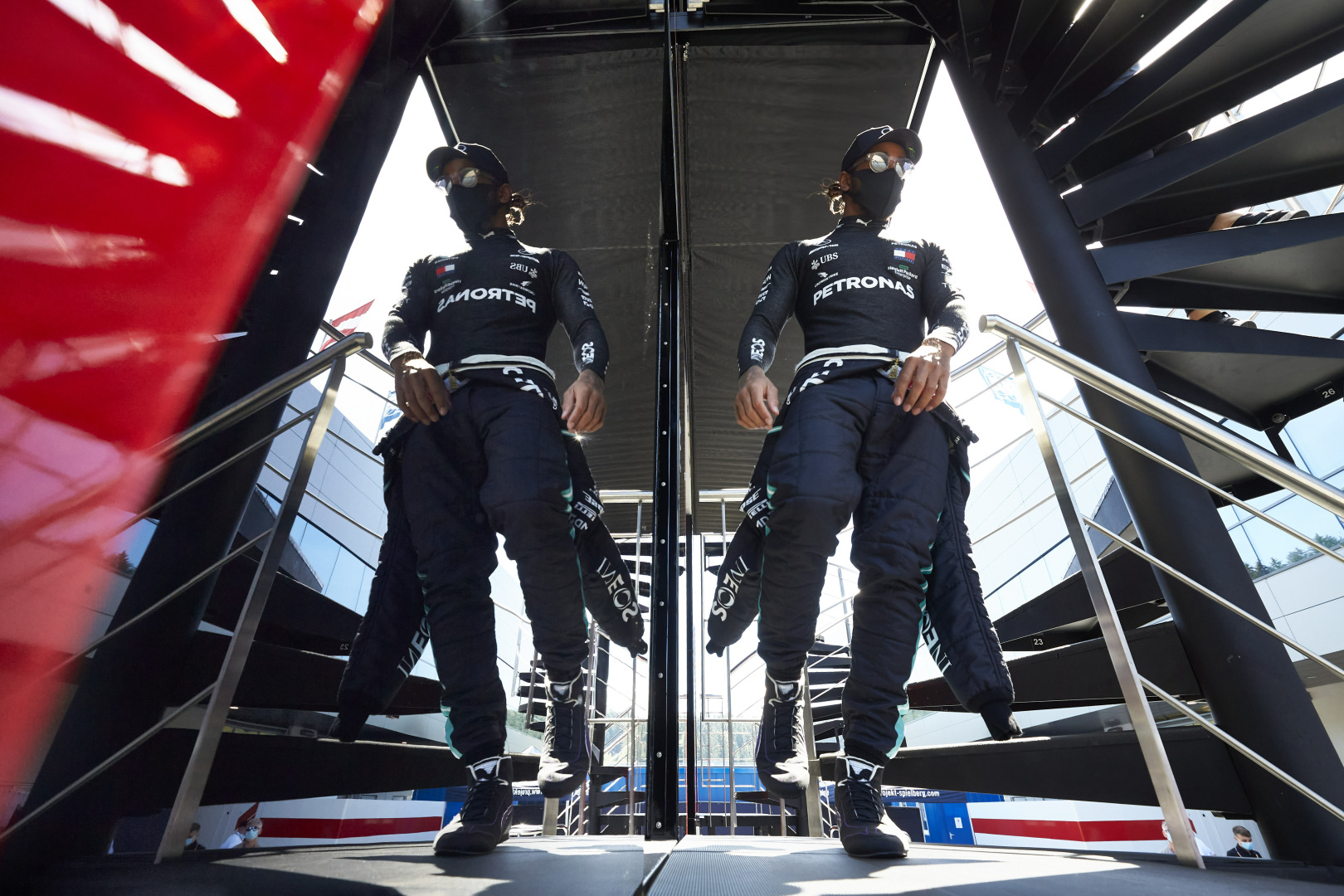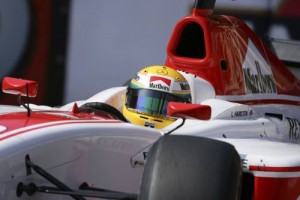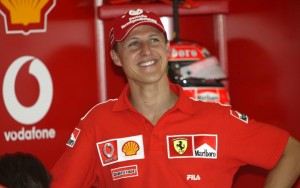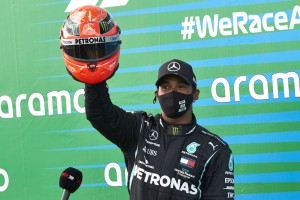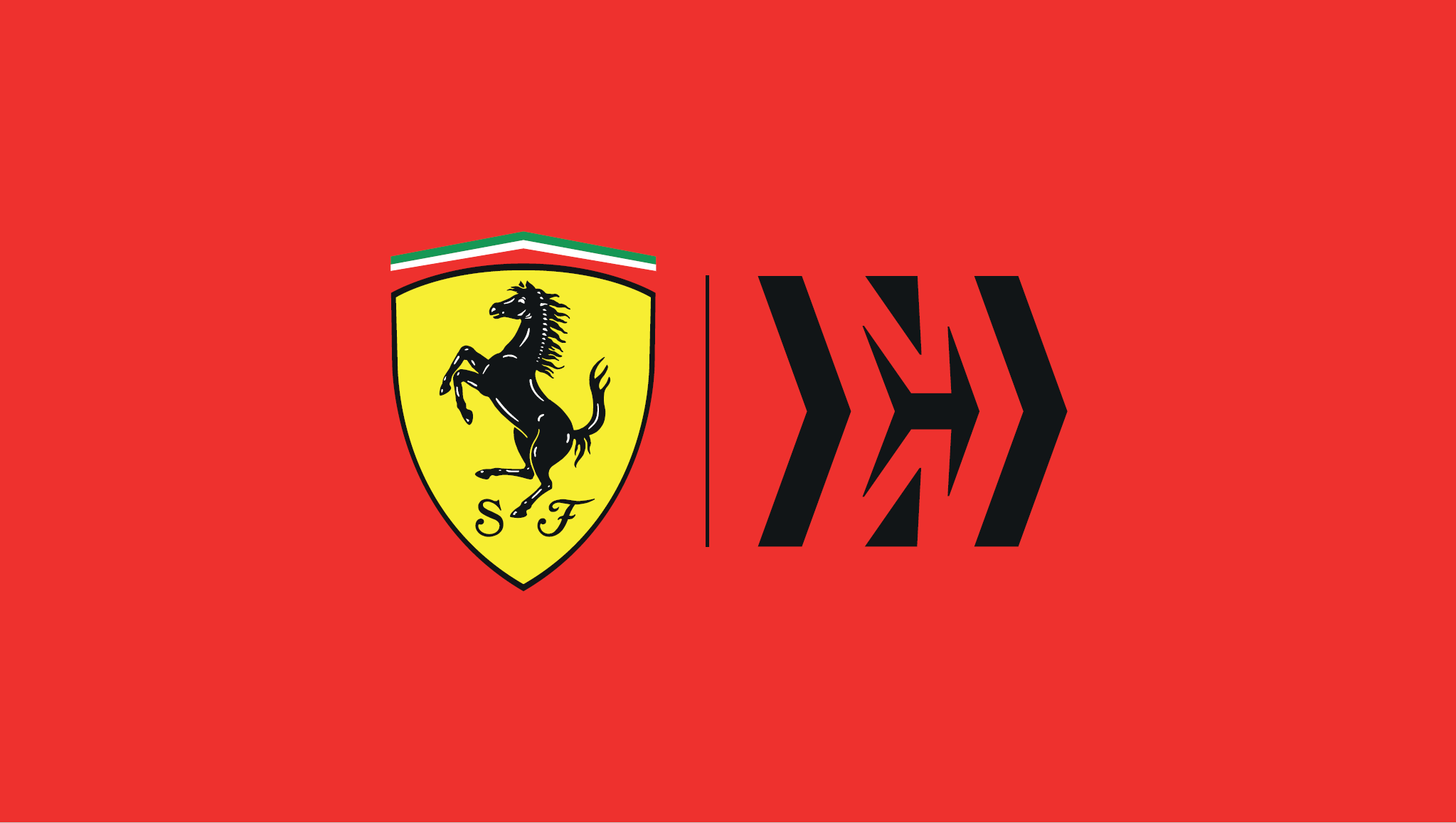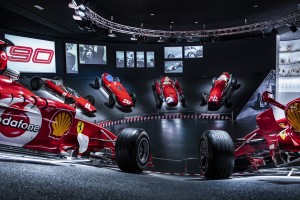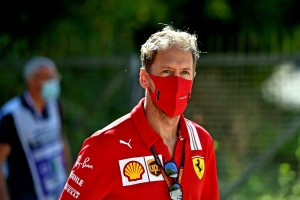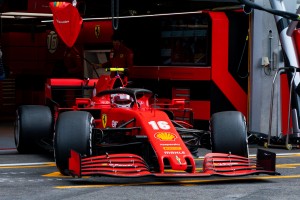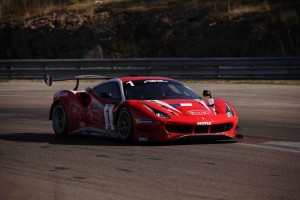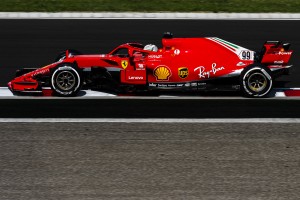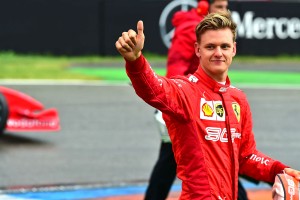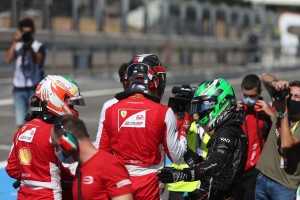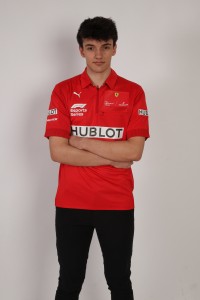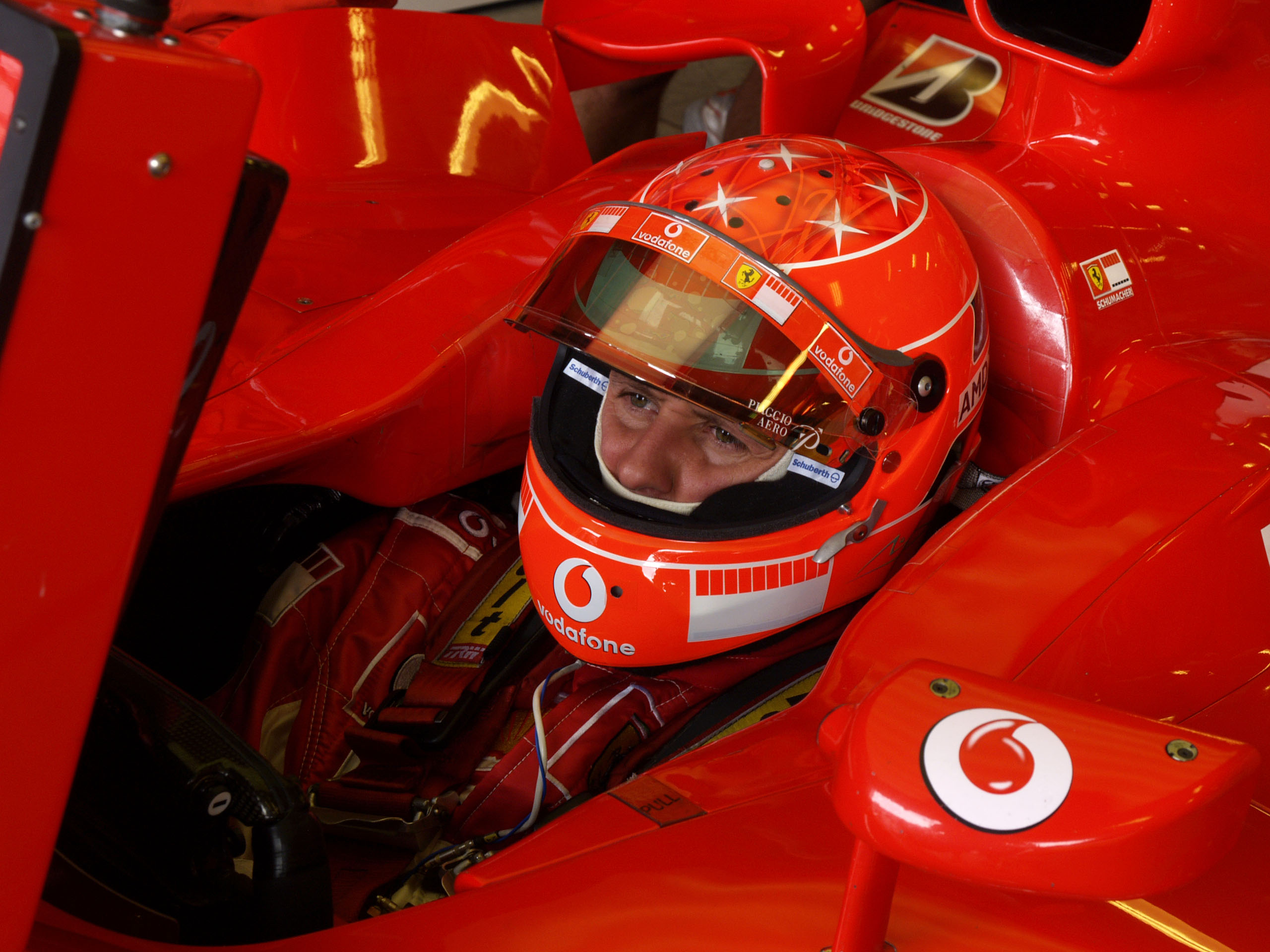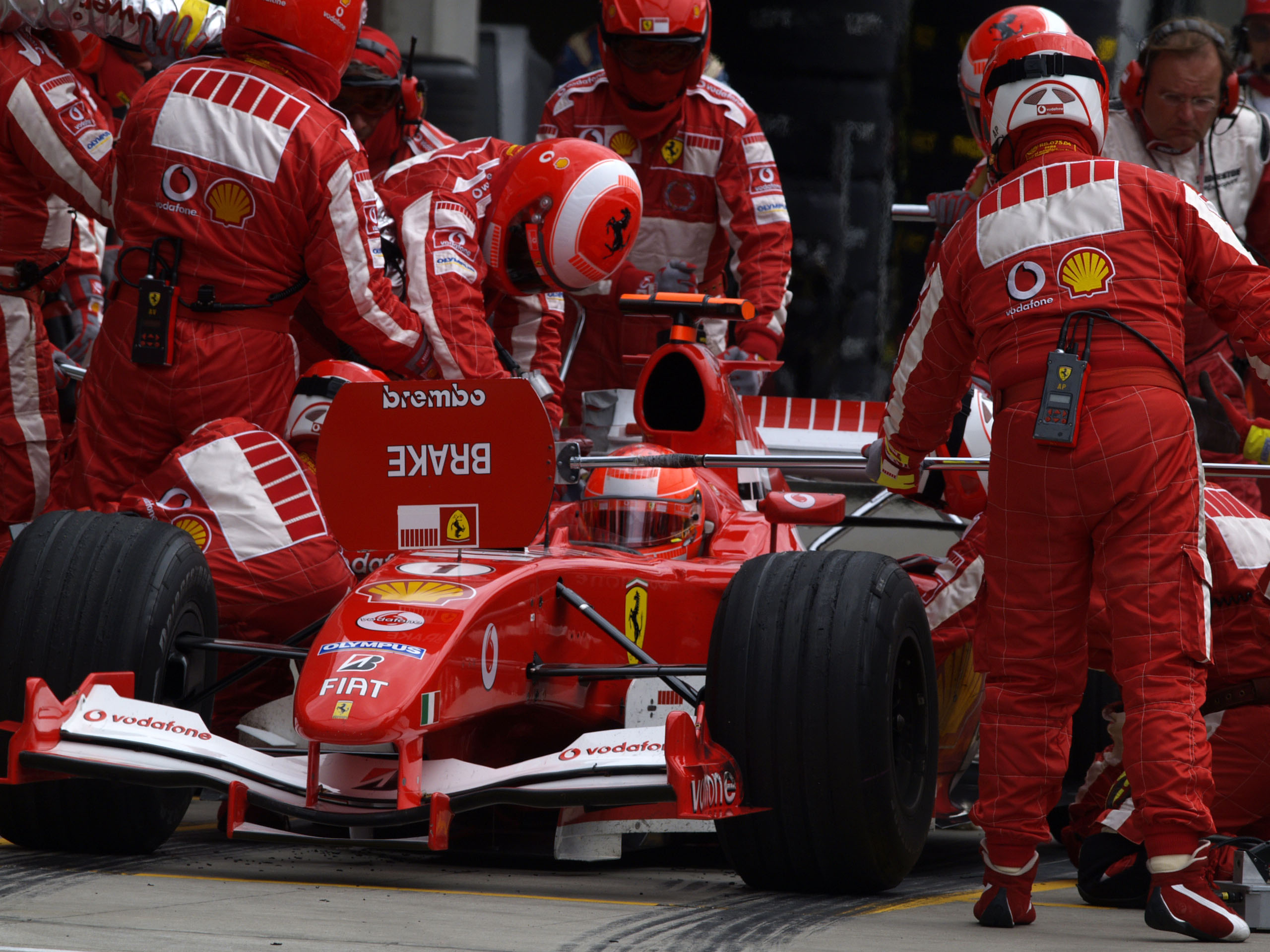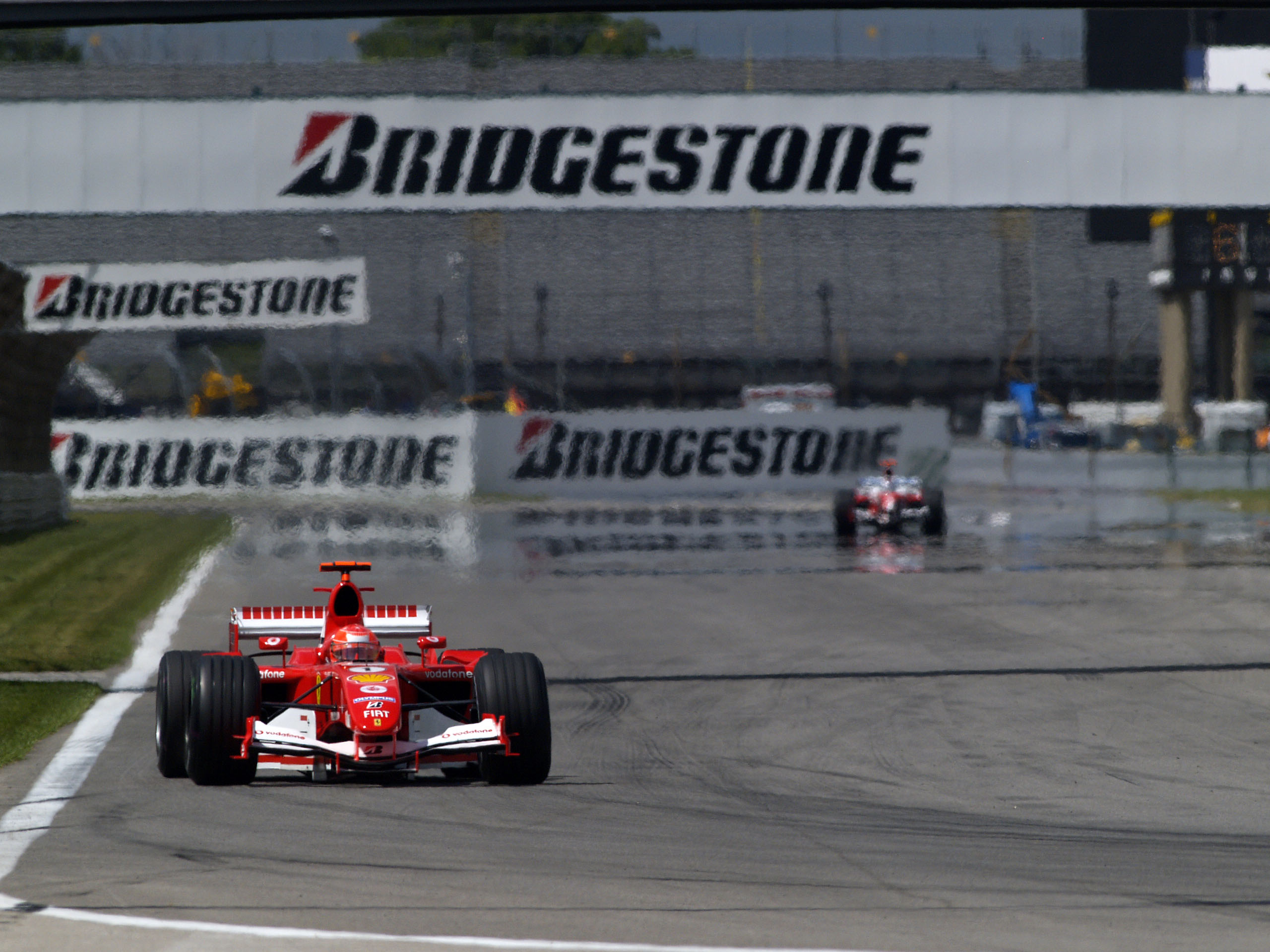After a stunning display of driving during a tricky Turkish Grand Prix, Lewis Hamilton secured his seventh World Driver’s Championship.
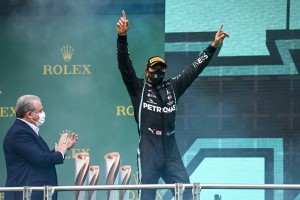
He now equals the legendary Michael Schumacher for championship wins, with many believing he will beat the record in the next few years. When Michael retired at the end of 2006 (and equally at the end of 2012 after his stint at Mercedes) it appears only he believed that his records could be broken. But just 8 years on from when Schumacher last raced in Formula 1, Lewis Hamilton has been able to match him. But how did Lewis win his championships? Let’s reminisce…
2008:
Lewis’ first championship came in just his second season in Formula One, following an incredible rookie campaign where he lost out on the championship to Kimi Raikkonen by just one point. Naturally for a rookie, you would assume the mistakes that cost him the 2007 title would affect him coming into the new season, but not so. He stormed to pole position at the Australian Grand Prix and subsequently took the chequered flag in a race that saw only 7 drivers finish – 6 after Rubens Barrichello was disqualified.
Hamilton’s quick start didn’t last long however, as the next 4 races were dominated by Ferrari – Raikkonen and Felipe Massa winning alternately. Lewis achieved podium finishes in the Spanish and Turkish Grands Prix, but could not find a way past the prancing horses. Monaco followed, where Lewis took his first victory in the principality, despite a puncture sustained after making light contact with the barrier mid-race.
Lewis’ only retirement that season came due to a pit lane incident in Canada where he wiped both himself and Raikkonen out of the race, with Nico Rosberg needing a nose change.
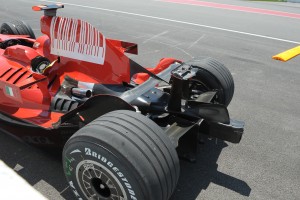
Perhaps Hamilton’s most famous victory that season (or even ever), came at Silverstone, where he charged through the lashing rain to lap the entire field bar 2nd and 3rd and finish a whopping one minute, eight seconds ahead of Nick Heidfeld in second. It was a race that saw many people give him the title “Rain Master”, and judging by his performance that day, he definitely deserved it.
Soon after came the controversy of Spa where Hamilton’s victory was stripped from him for leaving the track and gaining an advantage during a battle with Raikkonen. Kimi made slight contact with Lewis, causing the Brit to take to the run-off. Hamilton gave Kimi the position back, but received a 25 second time penalty after the race which saw him drop down to third; a decision that many saw as unfair.
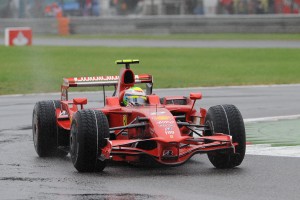
Following redemption in China, Lewis went into the final race in Brazil leading the championship by 7 points over Ferrari’s Felipe Massa. To win the championship Hamilton just needed to finish in 5th place or better, with Massa needing to win. Massa never really looked in doubt for the victory but after some rain started to fall in the closing laps, Hamilton lost fifth place to Sebastian Vettel. They battled hard and as Massa won the race the title looked to have slipped away. Until….”IS THAT GLOCK!?”. Those imortalised words. The words that meant Lewis had won the championship. The words that stopped the premature celebrations in the Ferrari garage. Anybody who was watching that race (or have seen it since) will always remember the celebrations in the McLaren garage, the unfortunate incident between the Ferrari mechanic and the wall, and the crying Massa on top of the podium. It was a race, and a title battle, that has become the stuff of legends.
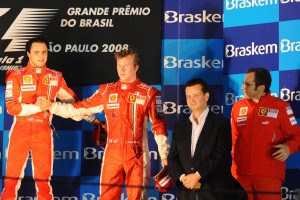
It was a year in which Hamilton had made some mistakes, but had also had some incredible performances. His first title had gone down to the wire but in the end it would be difficult to say he didn’t deserve it. In just his second season in the sport, Lewis Hamilton was a world champion.
2014:
In the years between 2008 and 2014, Lewis Hamilton struggled to get a quick enough car beneath him to challenge for a title. Whilst he won a race in every single season, the Red Bull and the Brawn GP cars were just too quick week in week out to be able to chase his second drivers title.
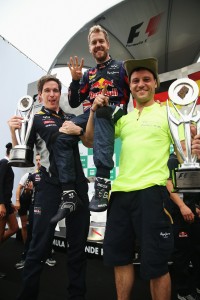
But that would soon change in 2014. Now with Mercedes, who Hamilton joined in 2013, Lewis partnered Nico Rosberg in a team that absolutely nailed the new engine regulations. The car was far superior to anyone else’s and that set up a tense Hamilton vs Rosberg title scrap.
Rosberg took first blood in Australia, winning by a comfortable margin over second placed debutant Kevin Magnussen. Lewis was forced to retire due to an engine issue. Hamilton then won the next four races, the most notable of which was Bahrain. Rosberg and Hamilton battled lap after lap but ultimately it was Lewis who came out on top. It remains to this day one of the most exciting battles for the lead of the modern era.
In Hungary, Hamilton got off to a poor start, sustaining front wing damage after colliding with the wall. Throughout the rest of the race, Hamilton had a great drive to finish 3rd, despite running in last place after the initial crash. Ricciardo won that race after Rosberg was punished by a late safety car.
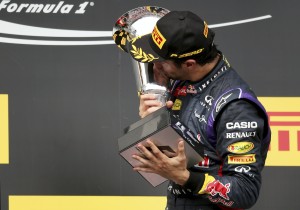
Tensions between the two started to fray in the following race in Belgium, as Rosberg made contact with Hamilton’s tire as the pair went into Les Combes. Lewis suffered a puncture and was later forced to retire from the race as a result. Again, it was Daniel Ricciardo who was there to sweep up and take the victory.
Hamilton then won the next five races, one of which was the Japanese Grand Prix, where we tragically saw the sport lose one of its most exciting young talents in Jules Bianchi.
Going into the Abu Dhabi finale, both Rosberg and Hamilton could still win the championship. In order to win, Lewis needed to finish in the top two, owing to the fact that the 2014 Abu Dhabi grand prix was the only race in history to offer double the usual number of points. Hamilton took the lead into the first corner and never looked like losing it. Whilst his teammate suffered car issues that saw him finish outside the points, Lewis went untroubled as he secured his second drivers title.
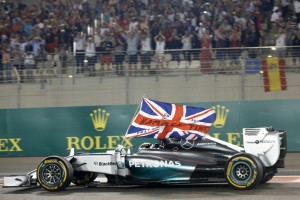
It had been a year of dominance for Mercedes and Hamilton, with the team winning 16 of the 19 races and Lewis winning an incredible 11 of them. When Lewis wasn’t winning, he either finished on the podium or never finished at all, which in itself is very impressive. In a season that brought the world the Hamilton – Rosberg rivalry, it was first blood to Lewis.
2015:
2015 saw Mercedes continue to dominate the sport as Hamilton could not be matched by his teammate. Lewis took victory in three of the opening five rounds, finishing second in those he failed to win.
Then came Monaco, and a rare blunder in strategy for Mercedes saw Hamilton lose the lead and second place to Rosberg and Sebatian Vettel respectively. Mercedes decided it would be a good idea to pit Lewis whilst the virtual safety car was deployed following Verstappen’s heavy crash with the barrier at Sainte Devote. But the German team had misjudged Hamilton’s gap to his teammate, allowing Nico (who had stayed out) to pass him and take the lead of the race. It was a race-losing mistake as Lewis failed to regain the positions he had lost.
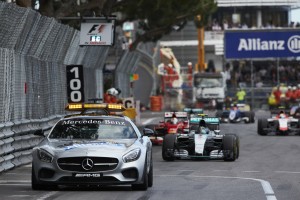
So far the championship battle had been tightly contested between Hamilton and Rosberg with the gap never being larger than 28 points. However, it was Lewis who came back from the summer break in better form, winning in both Spa and crucially Italy, where Rosberg was forced to retire. The gap between the pair was beginning to grow larger and larger.
Hamilton then took victory in Japan and Russia, the latter proving to be very costly for Rosberg after he was again forced to retire from the race. This allowed Lewis to go into the race in the USA able to wrap up the title by outscoring Vettel by nine points and Rosberg by two. Rosberg started on pole with Lewis alongside. However, it was the brit who led into turn one after he got off of the line better and was able to hang Rosberg out to dry at the first corner. Hamilton lost the lead to Ricciardo later on in the race but was able to gain it back during the pit stops. Lewis went on to win followed by Rosberg and then Vettel, after a race-costing error by his team mate.
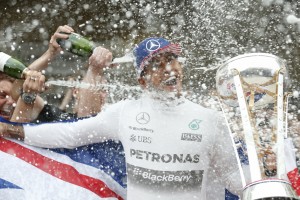
With only three races to go, Hamilton could no longer be caught in the drivers championship and thus he was crowned champion. It would be Hamilton’s last victory of the season with Rosberg gaining momentum going into the following season.
The 2015 Formula One World Championship had by no means been a classic, but Lewis was able to capitalise on Rosberg’s unfortunate set of circumstances to take what turned out to be a dominant championship victory. Ferrari had just started to emerge as challengers, but nobody could match the consistency of both Hamilton and Mercedes. Lewis Hamilton was now a three-time world champion.
2017:
Following a challenging season in 2016, Hamilton went into 2017 with a fresh face in the other Mercedes. Reigning champion Nico Rosberg decided to leave the sport on a high following his one and only title win. It would be Williams’ Valtteri Bottas who would partner Lewis for the 2017 season. But could he prove a close match for Hamilton?
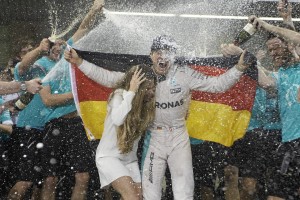
In short: no. Lewis did not have the championship all his own way, however. After a disappointing 2016, which saw them fail to improve on the promising results of 2015, it was Sebastian Vettel and Ferrari who would prove to be Hamilton’s closest competition. Vettel started the season strongly taking 3 victories and 3 second place finishes in the first 6 races, whilst Hamilton was only able to achieve 4 podium finishes in that time. By this time, Vettel led the championship by 25 points.
Tensions between Vettel and Hamilton were beginning to boil over however, as an incident under the safety car in Azerbaijan saw Lewis and Sebastian both fail to finish on the podium. Hamilton was leading when the safety car was called out with Vettel right behind him. Coming out of Turn 15, Vettel accelerated a lot more than Hamilton, subsequently causing the German to run into the back of him. Vettel wrongly believed that Lewis had brake-checked him and came alongside the Mercedes driver and drove into him. Sebastian was later given a ten second stop/go penalty for this incident. Whilst Vettel served his penalty, Hamilton’s head restraint started to come loose and he was forced to pit on safety grounds to fix it. Lewis eventually finished behind Sebastian with Daniel Ricciardo winning the race, despite dropping to the back of the field on Lap 1. It would be one of the most exciting races of 2017.
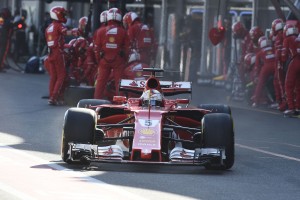
Silverstone has always been a special place for Lewis, and that proved to be so in 2017. Lewis himself had a comfortable lead throughout the entire race, but his luck really played out when both Ferraris suffered punctures. Vettel’s puncture came at the worst possible time for him, as he had to crawl almost the entire way around the track on 3 wheels. With Lewis winning the race and Sebastian finishing seventh, the gap in championship was down to just a single point in Vettel’s favour.
Lewis, however, is famous for coming alive in the second half of seasons and 2017 was no different. Victories in Belgium and Italy preceded a victory in the infamous 2017 Singapore Grand Prix. Hamilton started a lot lower down the order than expected, but rain before the race had started to cause some intrigue. The drivers arrived in their grid slots at the end of the formation lap and the lights started to turn on. As they turned out, Vettel moved over to the left-hand side of the track in order to cover off Red Bull’s Max Verstappen. Unbeknownst to Vettel however, his teammate, Kimi Raikkonen, had made an even better start and was on the other side of Verstappen. Three cars tried to be in one place at the same time and all three crashed out of the race, allowing Hamilton to take the lead; something he would not go on to lose.

Victory in Japan and then the USA saw Hamilton place one hand on the championship, especially after Vettel retired in Japan following a spark plug problem. Lewis went into the Mexican Grand Prix just needing to fail to be outscored by Vettel by 16 points to have an unattainable lead over the rest of the field. However, it would not be as simple as it appears. Following a long run off the line into the first corner, Vettel, Verstappen and Hamilton were all jostling for the lead into Turn 1. Then, disaster struck, as contact with Verstappen caused Vettel to puncture Lewis’ rear tire as he himself sustained significant wing damage. Both came into the pits at the end of the first lap and the rest of the race became a reconnaissance mission. Vettel was able to climb his way back to fourth position, whilst Lewis could only finish P9. This, though, was enough to secure Lewis the championship.
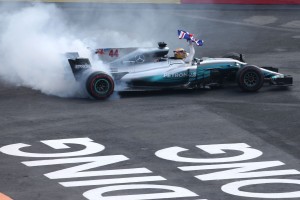
The 2017 season gave birth to the Vettel-Hamilton rivalry; something that was much needed for the sport to be entertaining. Lewis’ new teammate Valtteri Bottas proved to be an excellent number two driver, but just couldn’t match Hamilton across the entire season and so, had it not been for Vettel and Ferrari, we would have been in for a very uninteresting season. It was a season in which the championship was neck and neck for large portions but, in the end, it was Lewis who was able to match Sebastian on 4 world drivers championship titles.
2018:
Many saw the 2018 season as the “race to five championships” as Hamilton and Vettel looked to renew their rivalry coming into the new campaign. As with the season prior, Ferrari looked to be on par with Hamilton and Mercedes, and it’s safe to say Bottas did not.
Vettel started the season strongly, taking victory in the first two rounds in Australia and Bahrain to immediately put him in the lead of the championship. Hamilton bounced back in Azerbaijan, though, after he capitalised on an unfortunate incident that gave teammate Bottas (who was winning at the time) a puncture and caused him to retire. It was believed that the puncture was caused by some debris that had not been removed following the safety car restart. The victory moved Hamilton into the lead of the championship by just four points over Vettel.
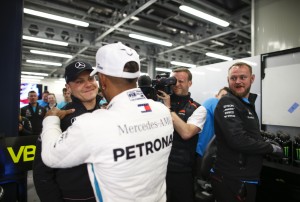
The championship swung again in Austria, where both Hamilton and Bottas suffered from engine and gearbox troubles and were both forced to retire from the race. With Vettel finishing in 3rd, he retook the championship lead by a single point. This was then extended to eight points the following race as Vettel took the victory at Silverstone – Hamilton’s “back yard”.
It was ultimately Lewis who had the last laugh though as a very tricky race in Germany saw Vettel crash in changing conditions and Hamilton win. After an issue in Qualifying 1 prevented him from completing the rest of qualifying, Lewis started from 14th place on the grid. The race began and Vettel was comfortably leading the way, whilst Lewis slowly climbed up the order. Then the rain started to fall. In the wet conditions, race leader Vettel locked up his brakes and got buried in the gravel trap. He was out. In order to retrieve Vettel’s stricken car, the stewards brought out a safety car and Bottas, who had inherited the race lead, was pitted.
The team, however, were not ready for him and the resulting chaos meant he was stationary for twenty seconds. A miscommunication with his engineer also saw Hamilton begin to come into the pits but change his mind, causing him to allegedly cross the white line. He then took the victory but was summoned to the stewards for the pit lane incident. Hamilton was not given a penalty, a decision which many saw as controversial. This was the turning point in the championship.
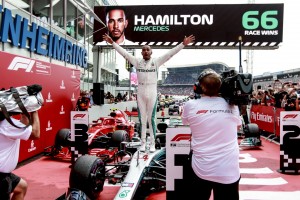
Lewis went on to win five of the next six races, whilst Vettel continued to struggle under the pressure. The gap between the pair had grown to 70 points heading into the Mexican Grand Prix and all Hamilton had to do to claim his 5th world drivers championship was fail to be outscored by Vettel by 21 points. The race itself was largely uneventful as Hamilton sought to secure his position (4th) and thereby the championship. Lewis now had an unattainable lead over second place Vettel and the championship was sealed with two races to go.
When you look back on the 2018 season, you can’t help but think that Vettel’s unforced error in Germany affected him greatly. From that point forward, Hamilton and Mercedes were streaks ahead of the rest and only Bottas had a chance at challenging him. For the second season in a row Bottas failed to do so. Lewis had had an incredibly consistent year, rarely finishing off of the podium. He was the deserved champion, and Juan Manuel Fangio’s number of titles had just been equaled.
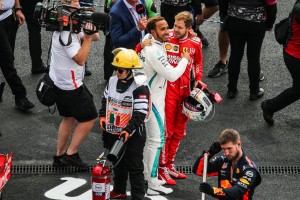
2019:
It’s fair to say Mercedes hadn’t truly dominated the sport for a couple of seasons; they took it upon themselves to put that right. The opening five races were 1-2s for the German team as Hamilton won 3 and Bottas won 2. In order for the viewers to have a championship battle to watch, Bottas needed to step up his game from 2018. And to his credit, he did.
Despite Bottas’ uptake in form, it was still not quick enough to cause Lewis too many problems, with the Brit having won 7 of the 10 completed races heading into Germany. But Germany 2019 was an uncharacteristic race for Lewis to say the least. The race eventually started in heavy rain after several formation laps, then the chaos started.
The tricky conditions saw drivers were unable to keep the car in a straight line, spinning off and crashing constantly. On Lap 22, Leclerc was a victim of the slippery track and got beached into the gravel. Hamilton joined him that same lap, making contact with the wall, but unlike Leclerc was able to get out of the gravel trap. Lewis needed to pit but in doing so crossed the same white line he allegedly crossed at the same track the year prior.
Panic ensued in the Mercedes garage as they were not expecting Lewis and did not have the tries or a new front wing ready. To top it off, Lewis received a penalty for crossing the white line. Later on in the race, Hamilton spun at turn one; this time just avoiding the barriers. His teammate also spun there, but was not so lucky. In a race where Bottas could have capitalised on Hamilton’s errors, the Finn went home empty handed as Red Bull’s Max Verstappen took the victory. By this stage the gap in the championship was 41 points.
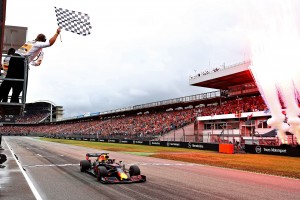
After the summer break, Ferrari – who had looked good on one lap pace all season – were finally able to take three victories in a row, the first being the tough weekend in Belgium which had seen the loss of rising star Anthoine Hubert in the F2 Feature Race. Ferrari’s pace wouldn’t last long though as Hamilton won in Russia, and then again in Mexico, sandwiching a Bottas victory in Japan. Going into the US Grand Prix, Bottas needed to outscore Lewis by 22 points to prevent him from taking the title. The weekend started well for the Finn as he took pole with Lewis down in fifth. Bottas went on to win the race, but with Lewis finishing second, the championship had been sealed.
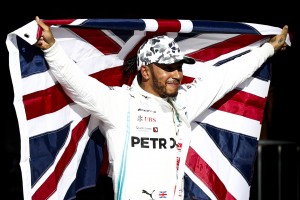
With the Mercedes being as dominant as they were at the start of the season, the responsibility of having a championship battle rested solely on Bottas’ shoulders. Whilst his performances were much improved, he could not match Lewis’ consistency and some impressive drives made branded him a deserved winner. Lewis Hamilton was by now a six time world champion. Roll on 2020!
2020:
How else can you describe 2020 other than “it was 2020”? A season that was hotly tipped to be incredible ground to a halt before it even got started in March due to the COVID-19 pandemic. After a considerable time away from the track, the season did eventually start with a new-look race calendar in Austria.
When the teams arrived in Austria, it was Mercedes yet again who dominated the field. The main challengers from prior seasons, Ferrari, had endured a woeful time developing the car and they had become the fifth and occasionally even sixth fastest team. The only team that could challenge Mercedes would be Red Bull, whose car was not fast enough to be a true title contender. Yet again, a title battle rested on Bottas’ shoulders.
Bottas started the season the stronger of the two Mercedes drivers, winning a crazy first race which saw just 11 finishers. Hamilton crossed the line in second place but was dropped down to fourth after he received a penalty for causing a collision with Alex Albon.
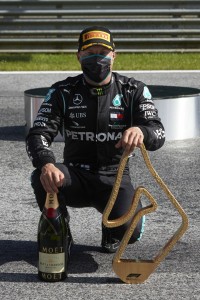
Lewis bounced back in the following two races, however, taking victory in both the second race in Austria, and the Hungarian Grand Prix.
This saw Lewis enter the first race in Silverstone five points clear of Bottas in the championship standings. Hamilton started on pole at the British Grand Prix and looked comfortable in the lead for almost the entire race. However, in the dying laps, teammate Valtteri Bottas started complaining of vibrations on his tires. Soon after that, his front left tire became punctured and he dropped to the back of the pack as he made a pit stop. To add to the drama, on the final lap, Hamilton’s left front also blew out and he was forced to complete the race with only three inflated wheels, a la Lightning McQueen. Second placed Max Verstappen slowly closed the gap between him and Lewis, just falling short at the line as Lewis took an unprecedented victory.
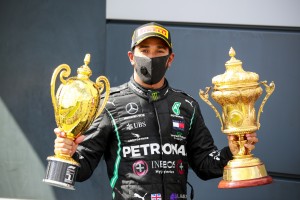
Further victories in Spain and Belgium meant Lewis went into the Italian Grand Prix 47 points clear of Max Verstappen, who had overtaken Bottas for 2nd in the championship. But the Italian Grand Prix proved tricky for Hamilton, who was only able to finish seventh, despite starting on pole. A rare loss of concentration meant Lewis came into the pits after it had closed and subsequently picked up a ten second stop/go penalty. Bottas, whose only issue that race was that he didn’t feel like being quick, failed to capitalise on Lewis’ error. Alpha Tauri’s Pierre Gasly went on to take the victory – a very popular winner.
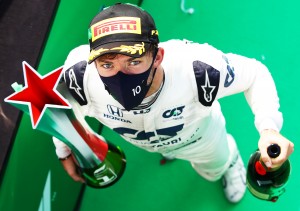
Victories in four of the next five races meant Hamilton went into a slippery Turkish Grand Prix needing to avoid being outscored by Bottas by eight points to retain the title. Rain, paired with the resurfacing of the track, meant there was very little grip and we were in for a cracking grand prix. Racing Point’s Lance Stroll led from pole position and it looked as if we would have a new race winner.
However, after the first round of pit stops, Stroll dropped off in pace and Lewis was slowly starting to get quicker. As the track dried, Hamilton was one of the few drivers able to keep his car in a straight line and as his tires wore out, the wet weather intermediate tire became more like a very soft slick, allowing him to keep them in a good temperature window. The way he nursed the tires to the end of the race and took victory was extremely impressive. It was a race deserving of sealing his seventh title.
2020 has posed many challenges to the teams and drivers, but the ever-adaptable Lewis Hamilton showed us once again why he deserved to win the championship this season.
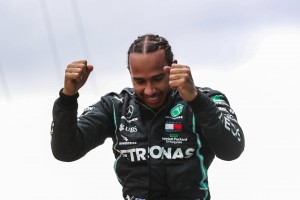
So, they are Lewis’ seven world championships to date. Throughout his career he has shown the world the sheer amount of talent he has. Yes, he has had the best car for almost all of his championships, but it is near impossible to win one without the best car, especially with the amount of races we see today. To suggest it is all the car is also naive. If it were all the car, how come Rosberg didn’t beat him more often? How come Bottas isn’t closer in pace? The truth is Hamilton is one of the sport’s all-time greatest drivers and thoroughly deserves to be a seven time world champion. Many believed Schumacher’s records would not be broken for a long time, but Hamilton has now matched him and could potentially beat him next year. He is one of the most successful drivers in the sport and still he rises!
